Continuing to play catch-up with the Pole Barn Guru reader questions, Mike answers questions about adding Tyvek under wall steel, attaching trusses to header on sealed plans, and the use of polycarbonate panels for use on post frame building.
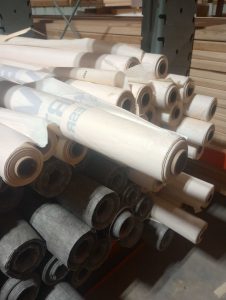 DEAR POLE BARN GURU: About to start the build of a 36 x 50 pole barn. Should I add a Tyvek or a “Block-IT” type material under the metal on the walls? I don’t know if I will ever finish the inside (maybe?) but where we live we get a ton of dust from farm fields etc. in the spring and winter before crops, and I am thinking that some type of material might help with drafts and dust. Seems quick and cheap to add now. Seems like everyone is squarely divided on yes/no. Thank you. MIKE in FREELAND
DEAR POLE BARN GURU: About to start the build of a 36 x 50 pole barn. Should I add a Tyvek or a “Block-IT” type material under the metal on the walls? I don’t know if I will ever finish the inside (maybe?) but where we live we get a ton of dust from farm fields etc. in the spring and winter before crops, and I am thinking that some type of material might help with drafts and dust. Seems quick and cheap to add now. Seems like everyone is squarely divided on yes/no. Thank you. MIKE in FREELAND
DEAR MIKE: Only reason to not have a Weather Resistant Barrier between your wall steel and framing would be if you were going to use closed cell spray foam insulation (in which case it should be applied directly to wall steel inside). It is so much easier to install now, than to wish you had done so after your building is completed.
DEAR POLE BARN GURU: My pole barn plans (architect designed & engineer stamped) show a double 2×12 header bolted into the notched top of the pole frame. Can the trusses sit directly on the top of the headers or should I put a typical double top plate on top of the headers (not shown on the plans). DAVE in PEYTON
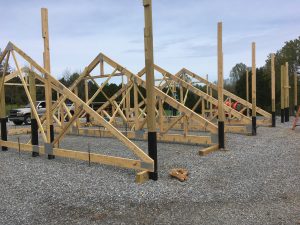 DEAR DAVE: You should erect your building exactly as shown on your engineer sealed plans, otherwise you have relieved your Engineer of Record of any responsibility for structural adequacy. Should you feel adding a top plate or plates to be necessary, please reach out to your engineer for clarification and a possible addendum to your plans.
DEAR DAVE: You should erect your building exactly as shown on your engineer sealed plans, otherwise you have relieved your Engineer of Record of any responsibility for structural adequacy. Should you feel adding a top plate or plates to be necessary, please reach out to your engineer for clarification and a possible addendum to your plans.
DEAR POLE BARN GURU: Are some kind of translucent panels an option for pole barn roofing or siding? Similar to UPS Truck roof. Natural lighting. THOMAS in CHICAGO
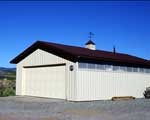 DEAR THOMAS: Polycarbonate panels may be used to provide natural lighting inside of non-insulated post frame buildings. In my opinion (as well as those of others) translucent panels should not be used in roof plane for a variety of reasons (https://www.hansenpolebuildings.com/2016/01/one-more-reason-to-not-use-skylights-in-steel-roofs/). They can be successfully used at top of one or both eave sidewalls or on triangles supported by end trusses.
DEAR THOMAS: Polycarbonate panels may be used to provide natural lighting inside of non-insulated post frame buildings. In my opinion (as well as those of others) translucent panels should not be used in roof plane for a variety of reasons (https://www.hansenpolebuildings.com/2016/01/one-more-reason-to-not-use-skylights-in-steel-roofs/). They can be successfully used at top of one or both eave sidewalls or on triangles supported by end trusses.
Photos: https://hansenpolebuildings.com/uploads/polebarnquestions/cde6e9e0628de407178fc59261af7f68.jpeg
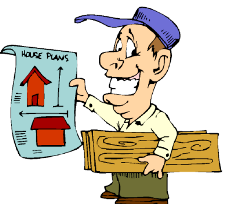 Polycarbonate panels are designed specifically to match up to metal panel profiles. With a high performance glazing, standing up to punishing exterior applications, Polycarbonate panels offer multiple advantages over traditional FRP panels: up to 20 times greater impact resistance, highest light transmission rates, lowest yellowing index, highest load rating, and highest resistance to wind uplift-outstanding properties confirmed in accredited laboratory testing and in installations worldwide since 1984. Polycarbonate panels are virtually unbreakable, they self-extinguish if exposed to flame, are hail resistant and are Underwriters Laboratory (UL) 580 Class 90 recognized.
Polycarbonate panels are designed specifically to match up to metal panel profiles. With a high performance glazing, standing up to punishing exterior applications, Polycarbonate panels offer multiple advantages over traditional FRP panels: up to 20 times greater impact resistance, highest light transmission rates, lowest yellowing index, highest load rating, and highest resistance to wind uplift-outstanding properties confirmed in accredited laboratory testing and in installations worldwide since 1984. Polycarbonate panels are virtually unbreakable, they self-extinguish if exposed to flame, are hail resistant and are Underwriters Laboratory (UL) 580 Class 90 recognized.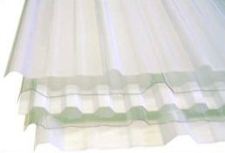 Polycarbonate panels are tough, requiring no special care. We recommend some cautionary steps: avoid stepping on or driving over the panels while on the ground, or folding during handling and installation. Avoid dragging panels on the ground, scraping against structural elements or any other sharp or rough objects, to keep from getting scratched.
Polycarbonate panels are tough, requiring no special care. We recommend some cautionary steps: avoid stepping on or driving over the panels while on the ground, or folding during handling and installation. Avoid dragging panels on the ground, scraping against structural elements or any other sharp or rough objects, to keep from getting scratched.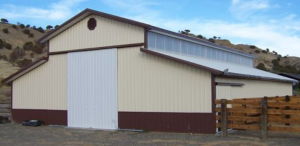 Recently one of our clients asked for a comparison between a Hansen Pole Building, and building produced by another provider. In doing the research to be able to give the client a qualified answer, I did come across a product which I was not familiar with – Acrylit®. Acrylit is a panel which is manufactured with 100% Acrylic resin with Gel Coat protection on both sides. Acrylit panels can be used for eave and ridge lights – which allow for natural light to enter pole buildings which do not have interior finished walls or ceilings.
Recently one of our clients asked for a comparison between a Hansen Pole Building, and building produced by another provider. In doing the research to be able to give the client a qualified answer, I did come across a product which I was not familiar with – Acrylit®. Acrylit is a panel which is manufactured with 100% Acrylic resin with Gel Coat protection on both sides. Acrylit panels can be used for eave and ridge lights – which allow for natural light to enter pole buildings which do not have interior finished walls or ceilings.





